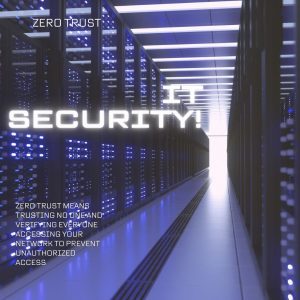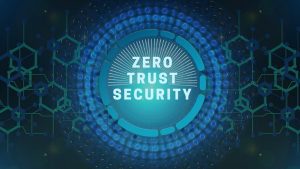
IT security is being transformed by Zero Trust, which is shaking up traditional perimeter-based models. Now, every connection attempt is rigorously verified before granting resource access. It’s a game-changer!
56% of global organizations consider adopting Zero Trust as a “paramount” or “significant” priority.
This approach offers significant security advantages. However, the transition process presents several potential challenges that could impact a company’s cybersecurity efforts.
Below, we will explore these common roadblocks and provide advice for successfully implementing Zero Trust security measures.
Remembering the Basics: What is Zero Trust Security?

Zero Trust disrupts the traditional “castle and moat” security model, which assumes that everyone inside the network perimeter is trusted. Instead, it operates on the assumption that everyone and everything is a potential threat, including users already inside the network. This approach enforces a rigorous “verify first, access later” policy, which may seem extreme but is essential for IT Security.
The fundamental principles of Zero Trust are as follows:
– Least Privilege: Users are granted access only to the specific resources necessary for their roles, and no more.
– Continuous Verification: Authentication is not a one-time event. It is an ongoing process where users and devices are consistently re-evaluated for access rights.
– Micro-Segmentation: The network is divided into smaller segments by IT, reducing the impact in the event of a breach.
Common Adoption Mistakes
Here are some key missteps to avoid:
Treating it as a Product, rather than an IT Security Strategy
“Some vendors may present Zero Trust as a product, but don’t be fooled! It’s a security philosophy requiring a cultural shift.
Utilizing tools like multi-factor authentication (MFA) and advanced threat detection and response are crucial components of this approach.”
Focus Only on Technical Controls
Technology plays an integral role in the implementation of Zero Trust, but its effectiveness is contingent upon the alignment of people and processes. It is imperative to provide comprehensive training to employees in order to instill the new security culture and to continually update access control policies. The human factor represents a critical component within any robust IT Security strategy.
Skipping the Inventory
You cannot secure what you are unaware of. catalog all your devices, users, and applications. This process helps to uncover potential access risks and provides a roadmap for prioritizing your efforts.
Forgetting Legacy Systems
During your transition, it’s crucial not to leave older systems unprotected. You must integrate them into your security framework or consider secure migration plans. If neglected, legacy systems can lead to data breaches that have a significant impact on your entire network.
Ignoring Third-Party Access and IT security

Third-party vendors present a potential security vulnerability. It is imperative to precisely establish access controls and diligently monitor their network activities. Implementing time-limited access as deemed appropriate is essential.
Remember, Zero Trust is a Journey
Building a robust security environment takes time and effort. Here’s how to stay on track:
- Set Realistic Goals: Overnight success is not realistic. Define achievable milestones and celebrate progress along the way.
- Embrace Continuous Monitoring: IT Security threats are constantly evolving. Continuously monitor your system and adjust your strategies as needed.
- Invest in Employee Training: Regular security awareness training is vital.
Ready to take the first step with Zero Trust security? Equip yourself with knowledge, plan your approach, and overcome the security challenges when implementing Zero Trust. This will enable you to build a more resilient business in the face of evolving cyber threats.
Schedule a Zero Trust Cybersecurity Assessment

Implementing Zero Trust is an ongoing journey toward a more secure future, and we are confident in our ability to lead you through it. Our team of IT security experts is well-equipped to help you successfully deploy it.
Contact us today to schedule a cybersecurity assessment and take the first step toward a more secure future.”






